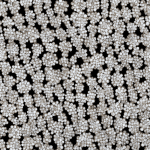The nutrition plan of an ultra-runner can significantly impact their performance and recovery. A thoughtful and tailored approach that adjusts nutrient intake to training demands can offer many benefits. Periodized nutrition plan is a versatile and dynamic approach that can have a profound impact on the results. In this article, we will delve into the concept of periodized nutrition, its benefits, and ways to implement it effectively.
What Is Periodized Nutrition?
Periodized nutrition refers to a systematic approach to an athlete’s diet that aligns with their training cycles, optimizing performance and recovery. While this concept has been widely adopted in the realm of strength and speed sports, it is gaining traction among endurance athletes, such as ultra-runners.
A lire en complément : What Techniques Can Improve Peripheral Vision for Better Performance in Racquet Sports?
Periodization of nutrition involves adjusting the intake of carbohydrates, proteins, and fats according to the intensity and duration of the athlete’s training phases. This method aims to coincide with the body’s fuel demands, aiding in performance, recovery, and adaptation to training stimuli.
To clearly understand the concept, imagine your training program as a series of waves, each with peaks and troughs. The peaks represent periods of high-intensity training, while troughs act as recovery periods. Periodized nutrition aims to mirror these peaks and troughs with nutrient intake. When you engage in high-intensity training, your diet should be rich in carbohydrates, the primary fuel source for such activities. Conversely, during lower-intensity or recovery periods, the focus shifts to protein to aid muscle repair and recovery.
Cela peut vous intéresser : What Strategies Can Optimize Cognitive Recovery Post-Concussion in Athletes?
Significance of Periodized Nutrition in Ultra-running
Ultra-running is an extreme sport that places extraordinary demands on the athlete’s body. In events that often last for several hours or even days, maintaining optimal performance becomes critical. In this context, a periodized nutrition plan can be the difference between merely finishing the race or setting a new personal record.
The primary advantage of periodized nutrition is its flexibility. It allows ultra-runners to adapt their nutrient intake depending on their training phase, enhancing both performance and recovery. For instance, during high-intensity training periods, a diet rich in carbohydrates ensures a sufficient supply of energy to meet the demands. Meanwhile, a protein-focused diet during recovery periods aids in muscle repair and growth, thus preparing the body for subsequent training sessions.
Another benefit of periodized nutrition lies in its potential to enhance metabolic flexibility. By varying carbohydrate intake, ultra-runners can train their bodies to efficiently switch between different energy sources, depending on the intensity and duration of the activity. This adaptability can be particularly advantageous in ultra-running, where the body’s energy reserves are continually tested.
Implementing Periodized Nutrition
Implementing a periodized nutrition plan requires careful planning and an understanding of the body’s nutritional demands at different training intensities. The first step is to identify your various training phases, which could range from preparatory, competitive, and transition phases.
During the preparatory phase, the focus is on building a solid endurance base. The diet during this period should be balanced, providing an adequate mix of carbohydrates, proteins, and fats. As the training intensity increases in the competitive phase, the carbohydrate intake should be ramped up to provide sufficient energy for high-intensity work.
In contrast, during the transition or recovery phase, the diet should be rich in proteins and fats. Proteins are essential for muscle repair and growth, while fats are a rich source of energy for lower-intensity activities. It’s also a period when runners can benefit from antioxidant-rich foods to ward off inflammation and speed up recovery.
Challenges of Periodized Nutrition
Despite its numerous benefits, implementing a periodized nutrition plan is not without its challenges. One of the main hurdles is the need for continual monitoring and adjustment of nutrient intake. This requires a deep understanding of nutrition and the ability to accurately calculate and adjust your macronutrient needs based on your training program.
Additionally, the demands of ultra-running can make it physically challenging to consume the necessary amount of food. High-intensity training can suppress appetite, making it difficult for athletes to meet their nutritional needs. Moreover, during long races, runners often face gastrointestinal issues that can hamper nutrient absorption and utilization.
However, with careful planning and the guidance of a qualified sports nutritionist, these challenges can be overcome. A well-implemented periodized nutrition plan can truly be a game-changer, propelling your ultra-running performance to new heights.
The Role of a Sports Nutritionist in Periodized Nutrition
A sports nutritionist plays a crucial role in devising and monitoring a periodized nutrition plan for an ultra-runner. They have the expertise and understanding of the body’s nutritional needs at different training intensities. These professionals can assess an athlete’s physiological make-up, training schedule, and specific goals to create a tailored nutrition plan.
During the preparatory phase, a sports nutritionist focuses on ensuring a balanced, nutrient-rich diet that promotes endurance build-up. They can recommend specific carbohydrate, protein, and fat ratios and suggest food sources to fulfill these requirements. As the intensity of training increases in the competitive phase, a sports nutritionist can help ramp up the carbohydrate intake to provide an adequate energy supply.
In the transition phase, protein and fats become the focal points. Here, the professional can recommend protein-rich foods to aid in muscle recovery and growth. They can also suggest foods rich in antioxidants to ward off inflammation and hasten recovery. The nutritionist can also guide on appropriate fat intake to efficiently fuel low-intensity activities.
Furthermore, a sports nutritionist can provide invaluable guidance to overcome the challenges associated with periodized nutrition, such as gastrointestinal issues during long races or suppressed appetite due to high-intensity training. They can suggest strategies, such as nutrient timing, hydration, and the use of supplements, to ensure adequate nutrient absorption and utilization.
Conclusion: The Power of Periodized Nutrition
In conclusion, periodized nutrition offers a dynamic and flexible approach to fueling the body of an ultra-runner. By aligning nutrient intake with training phases, it can significantly enhance performance, recovery, and metabolic flexibility. The flexibility of this approach allows athletes to adapt their diets to their training intensities, leveling up their ultra-running performance.
However, the implementation and monitoring of a periodized nutrition plan can be challenging. It requires a deep understanding of nutrition and constant adjustment of macronutrient needs based on one’s training program. This is where the expertise of a sports nutritionist can be invaluable. They can provide tailored advice and strategies to help ultra-runners overcome the challenges associated with periodized nutrition.
In short, periodized nutrition isn’t just about what you eat, but also when and how much you eat. It is a strategic, tailored, and systematic approach that, when implemented effectively, can be a game-changer for ultra-runners, helping them reach new levels of performance and endurance.











